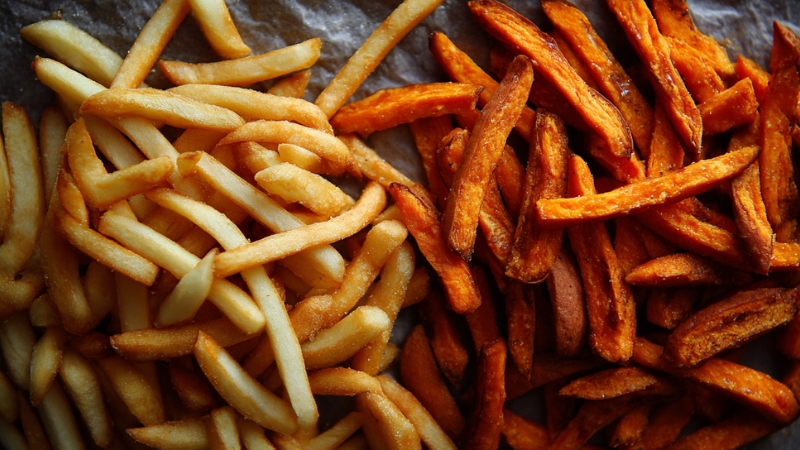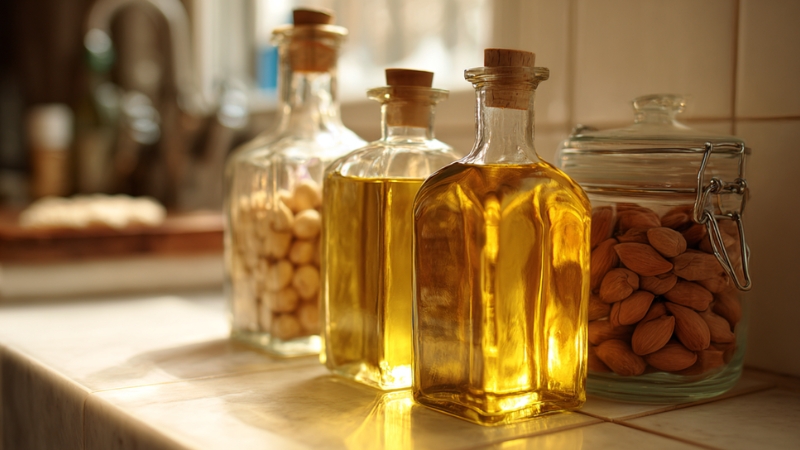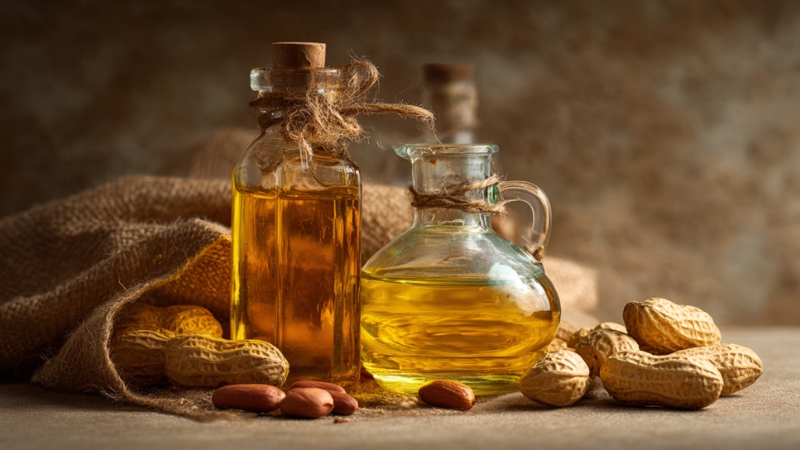Can You Mix Peanut Oil and Vegetable Oil? Mixing Cooking & Frying Oils Explained
Yes, you can safely mix peanut oil and vegetable oil for both cooking and frying, as long as neither oil has reached its smoke point or gone rancid.
Both are neutral-tasting, high-heat oils, and when blended, they perform very well for deep-frying, pan-searing, or even everyday sautéing.
However, the results depend on the proportions you mix, the type of vegetable oil you’re using, and the cooking temperature.
How the Blend Actually Works
Peanut oil’s smoke point is around 450°F (232°C), one of the highest among cooking oils. Vegetable oil (usually a soybean or canola blend) has a smoke point between 400°F and 450°F, depending on refinement.
When you mix them, the resulting blend maintains a similar high smoke point, ideal for deep-frying without breaking down or smoking too fast.
Property
Peanut Oil
Vegetable Oil (Canola/Soy Blend)
Mixed (50/50)
Smoke Point
~450°F / 232°C
~400–450°F / 204–232°C
~430–440°F / 221–227°C
Flavor
Light nutty
Neutral
Mild nutty
Saturated Fat
~17%
~14%
~15–16%
Monounsaturated Fat
~46%
~59%
~52–54%
Polyunsaturated Fat
~32%
~28%
~30%
Ideal For
High-heat frying, wok cooking
Every day, frying, baking
Frying, roasting, and searing
The result is a stable, crisping oil that works beautifully for foods like fried chicken, French fries, or tempura, anything that needs even browning without heavy flavor.
How to Mix Them Properly
You can blend peanut oil and vegetable oil in any proportion, but for the best results:
- Use equal parts (50/50) for balanced performance.
- Combine before heating. Pour both oils into your pot or fryer before turning on the heat so they mix evenly.
- Avoid reheating more than twice. Even though both oils are stable, reheating repeatedly can cause oxidation and off-flavors.
- Store leftover blended oil in a sealed container in a cool, dark cabinet, not the fridge.
Best Dishes for the Peanut–Vegetable Blend

Because this combo has a neutral-to-mild flavor and high smoke point, it works great for:
- Fried Chicken or Shrimp: The peanut component adds a subtle crisp and golden hue.
- French Fries & Sweet Potato Fries: Maintains crispness for longer without greasy residue.
- Stir-Fry or Wok Cooking: Withstands high heat without smoking.
- Deep-Fried Snacks: Perfect for samosas, fritters, doughnuts, or tempura.
For light sautéing or salad dressings, though, the peanut flavor may be too strong; stick to pure vegetable or olive oil for that.
Safety Note: Peanut Allergies
Mixing the two oils doesn’t “dilute” peanut allergens.
Even if it’s only 10% peanut oil, the mixture is unsafe for anyone with a peanut allergy. The proteins that cause reactions remain intact.
If you’re cooking for a group or restaurant service, always label mixed oils clearly.
When You Shouldn’t Mix Them

While safe, there are moments when mixing isn’t useful:
- Old oil: Never combine fresh peanut oil with used vegetable oil. Degraded oil will reduce the smoke point and create bitter flavors.
- Low-heat recipes: For baking or salad drizzling, there’s no advantage; the high smoke point isn’t needed.
- Distinct flavor goals: If you want the nutty flavor to shine (like for Asian-style fried noodles), use peanut oil alone.
Practical Ratios for Common Uses
Cooking Task
Ideal Ratio (Peanut: Vegetable)
Notes
Deep Frying
1:1
Balanced flavor & stability
Wok Stir-Fry
2:1 (more peanut oil)
Brings out my ild nutty aroma
Bulk Fryers / Restaurants
1:3
Cost-efficient and neutral flavor
High-Flavor Dishes (e.g., satay)
Pure peanut oil
Keeps an authentic aroma
Environmental and Storage Considerations
Both peanut and vegetable oils oxidize over time, especially if exposed to light or air. Once mixed, use the blend within 6–8 months.
For long-term storage, keep it in a dark, airtight bottle away from heat. Pantry temperatures around 20–22°C are ideal.
Avoid reusing oil more than two or three times, as polymerization leads to sticky residue and potential carcinogenic compounds.
Final Verdict
View this post on Instagram
Yes, you can absolutely mix peanut oil and vegetable oil for frying, roasting, or searing. It’s safe, practical, and often yields better texture and flavor than using either oil alone.
Just keep proportions sensible (around 50/50), avoid overheating, and never use it for people with peanut allergies.
Done right, this simple blend gives you the crispiness of peanut oil with the neutral balance and affordability of vegetable oil, the best of both worlds for any home cook or restaurant fryer.

